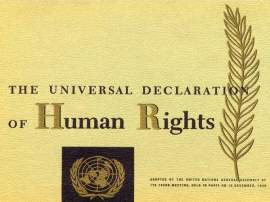
UN Sierra Leone
UN operation in Sierra Leone
Sierra Leone has been a very troubled area for many years. In 1991, Foday Sankoh of the Revolutionary United Front initiated the Sierra Leone Civil War. In October of 1990, President Momoh set up a constitutional review commission to review the one party system that the country has since 1978. However, there was a tremendous amount of suspicion that Momoh was not serious and rule was blatantly abusing power. Government corruption and mismanagement of diamond resources were the two main reasons that civil war broke out in Sierra Leone. In Liberia, Sierra Leone’s neighbor there was a civil war going on which had an undeniable influence in the start of the civil war in Sierra Leone. Charles Taylor, who was the leader of the National Patriotic Front of Liberia at the time allegedly helped form the Revolutionary United Front under the commander of former Sierra Leonean army corporal Foday Sankoh. For helping with the creating of the RUF, Taylor received diamonds from Sierra Leone, one of their prized and lucrative natural resources. The RUF started attacking villages in Sierra Leone, and the government which was already suffering from a poor economy and corruption were unable to face the opposition. Within a month, RUF controlled most of the Eastern Province and forced the recruitment of child soldiers. As a response, some young soldiers from the Sierra Leonean army started a counter attack and exiled the incumbent president Momoh. These soldiers established the National Provisional Ruling Council. The NPRC was extremely inefficient and more and more of Sierra Leone fell to RUF soldiers. However, in retaliation the NPRC was able to hire hundreds of private mercenaries who then drove the RUF back to the borders of Sierra Leone.
While all this was occurring, there was a great deal of corruption within the NRPC, and its current leader Valentine Strasser was busted in a coup led by his own people, his replacement was Maada Bio. Maada Bio, reinstated the Constitution and called for presidential elections. Ahman Tejan Kabbah, of the Sierra Leone People’s Party won the elections and was in office with a cabinet and the NRPC was trying to legitimize their government. However, recently after Kabbah was ousted by the Armed Forces Revolutionary Council. The head of AFRC, Koroma invited members of the RUF to join his government.
After many unsuccessful attempts to overthrow governments and seize power, the United Nations in 2000 finally decided to send peacekeepers to help bring back order and remove weapons from the rebels. In the ten year civil war, approximately 50,000 people were killed in Sierra Leone’s civil war. By January of 2002 the war was finally declared over and in May of that year Kabbah was reelected president. By 2004 the UN disarmament process was complete and they also backed a war crimes court and began holding trials for senior leaders from both sides of the war.
Blood Diamonds
Diamonds from Sierra Leone are well-known amongst those in the jewelry industry as some of the best quality diamonds available today. However, this prized natural resource has also been wreaking havoc in Sierra Leone today and the diamond trade there is extremely perilous. Diamonds from Sierra Leone have been synonymous with brutality, violence, and conflict. This problem escalated in 1968 when Siaka Stevens became prime minister of Sierra Leone and recognized how lucrative the diamond trade industry was. Stevens made a very large profit out of illegal diamond mining and trading, and in the following years most diamond trade in Sierra Leone was illegal. In 1991, Sierra Leone became an extremely volatile region as the Revolutionary United Front (RUF) started attacking the governments. While their “official” goal was to end crime and corruption, it became apparent that their interests lay in controlling the diamond mines. With RUF controlling all the diamond mines, labor conditions were extremely poor with very harsh punishment for slight mistakes. These diamonds from Sierra Leone as well as certain other African countries became known as blood diamonds or conflict diamonds. In the 1990s, approximately $125 million worth of rough diamonds were bought by just Europe.













